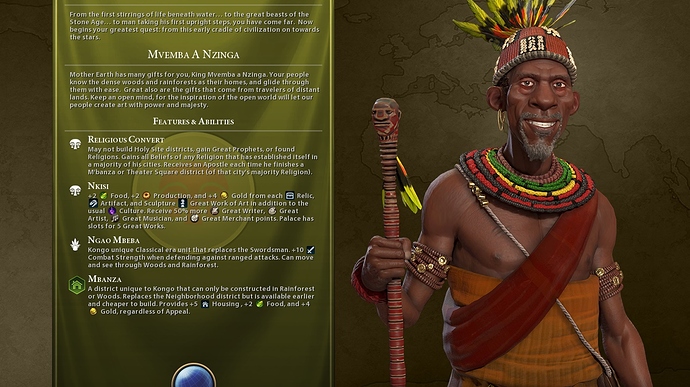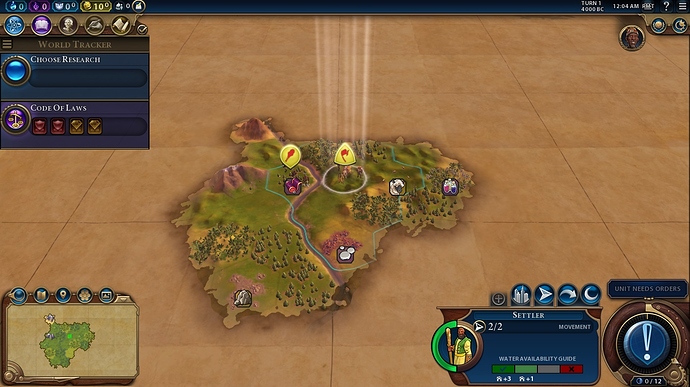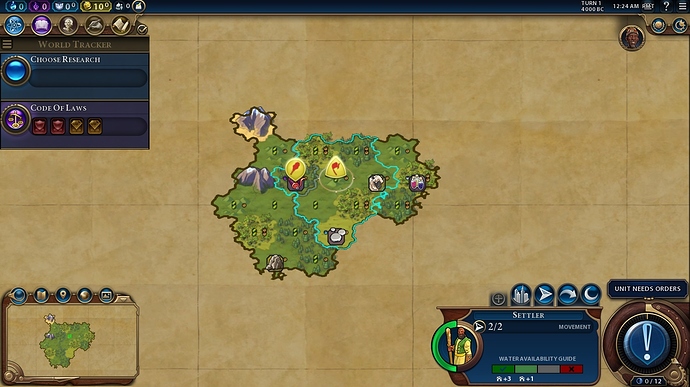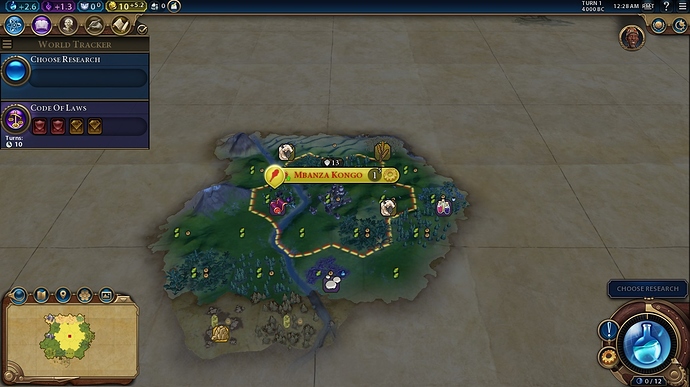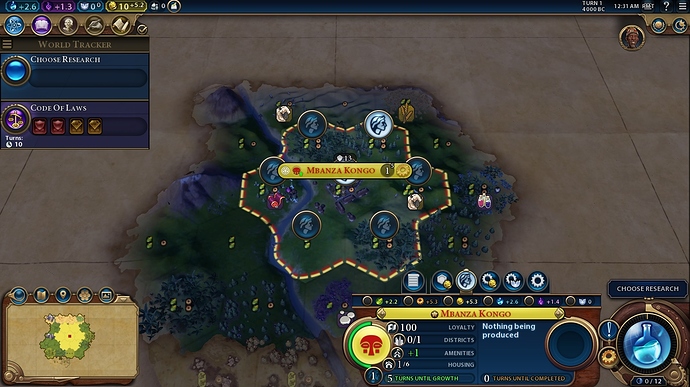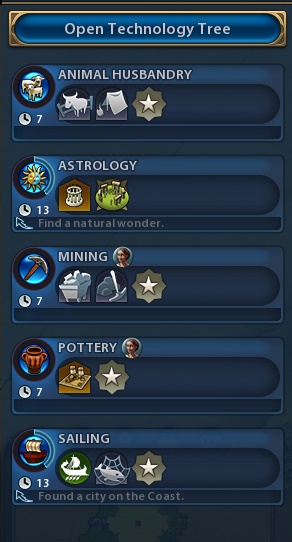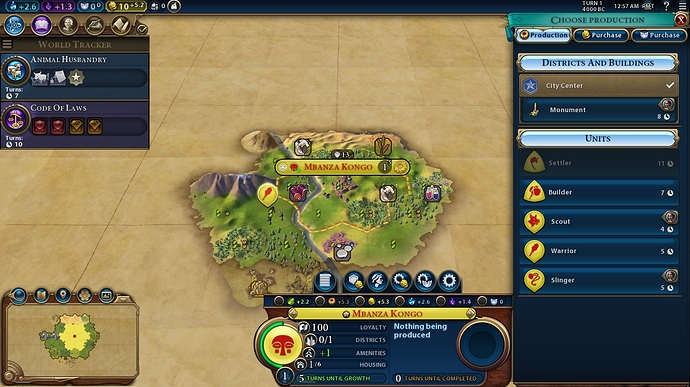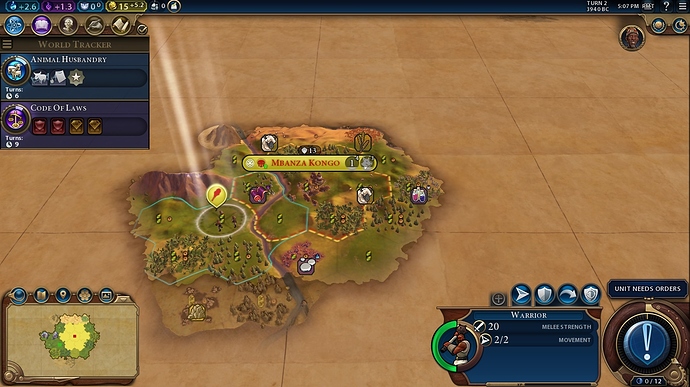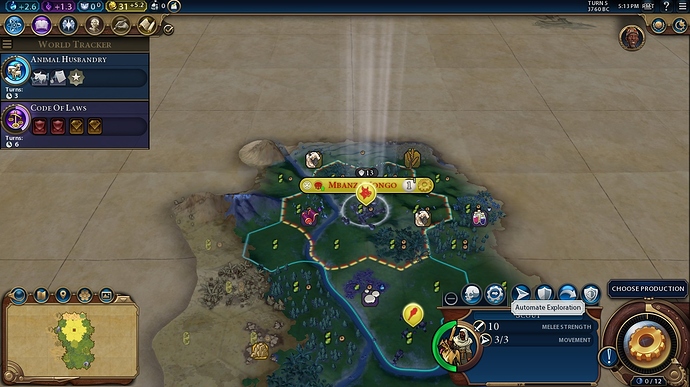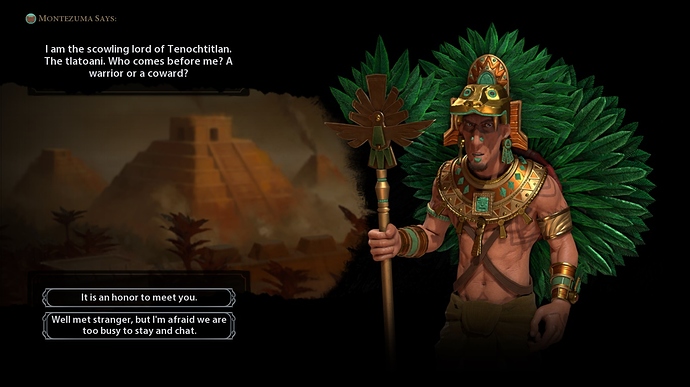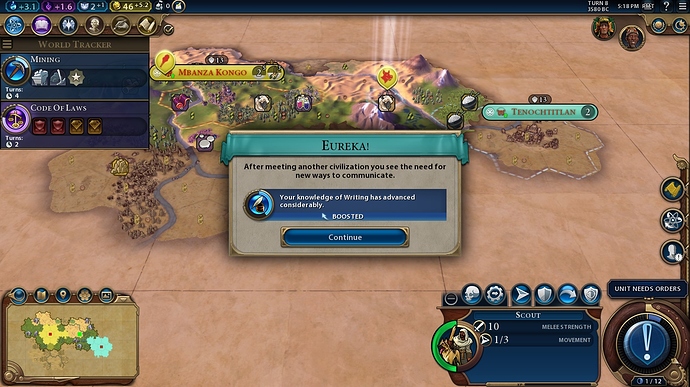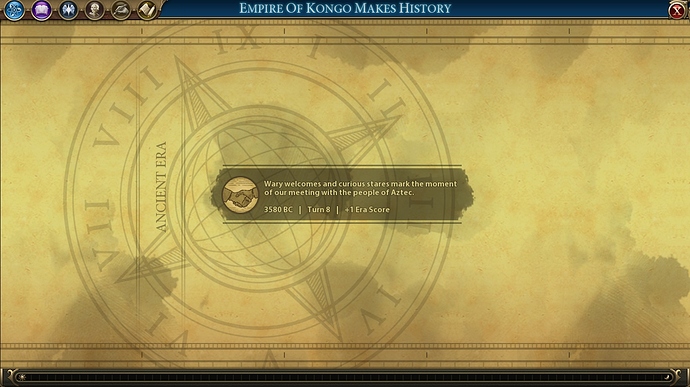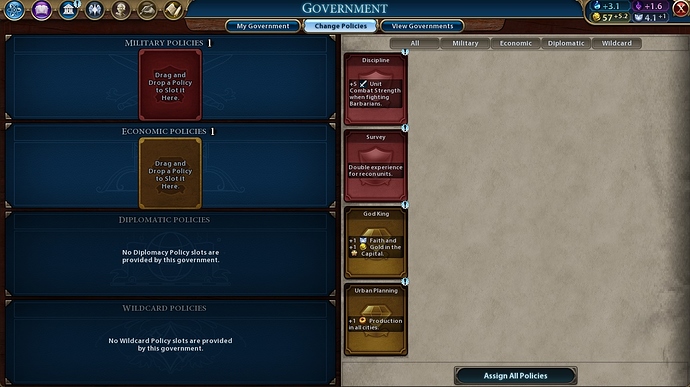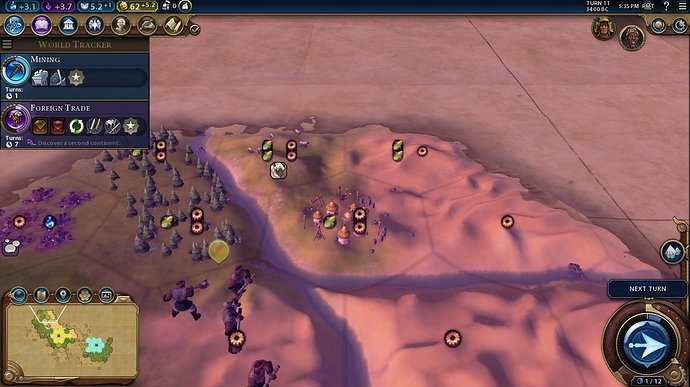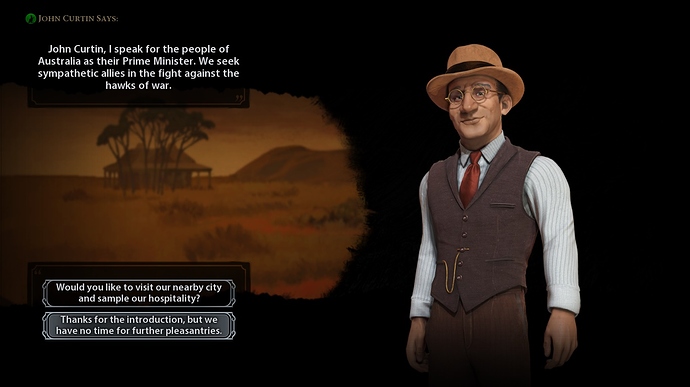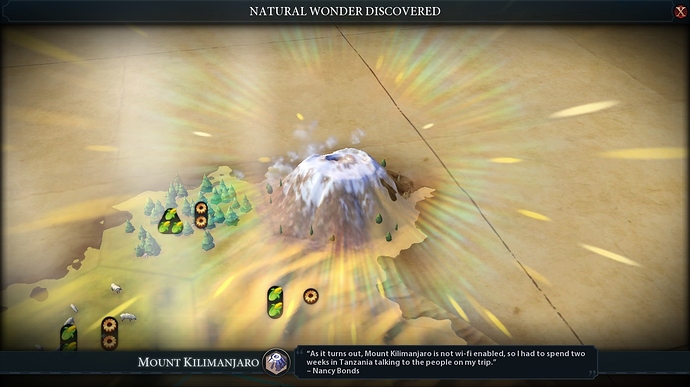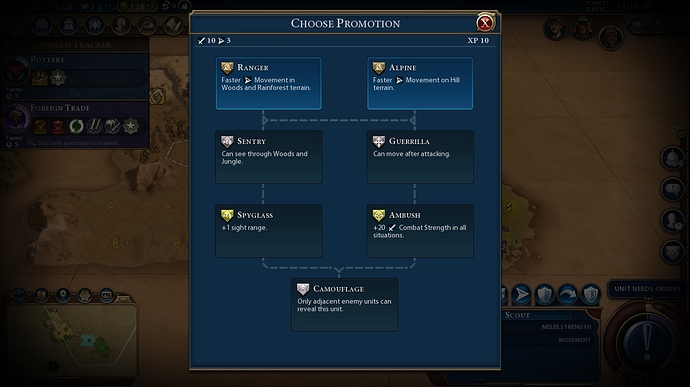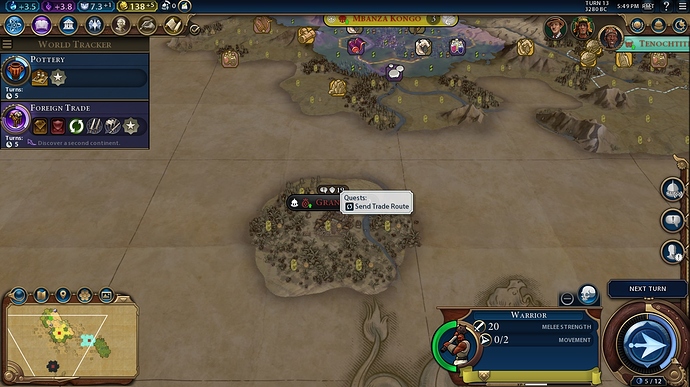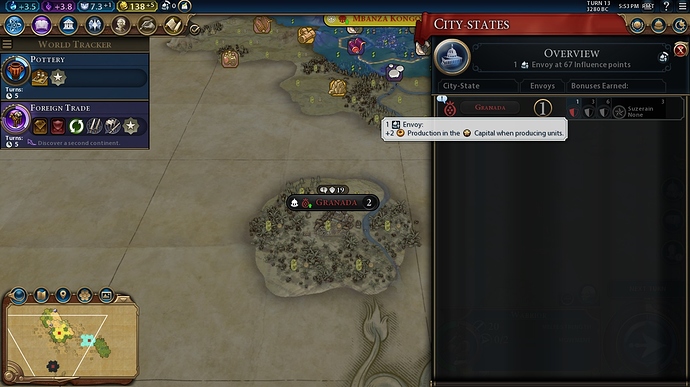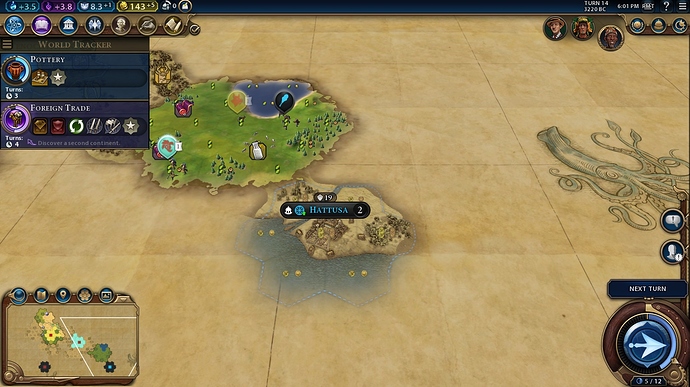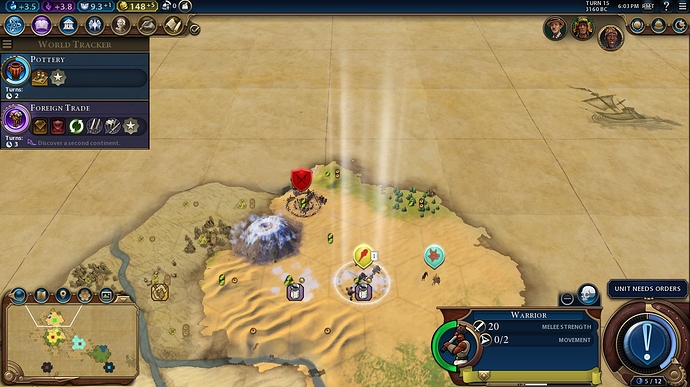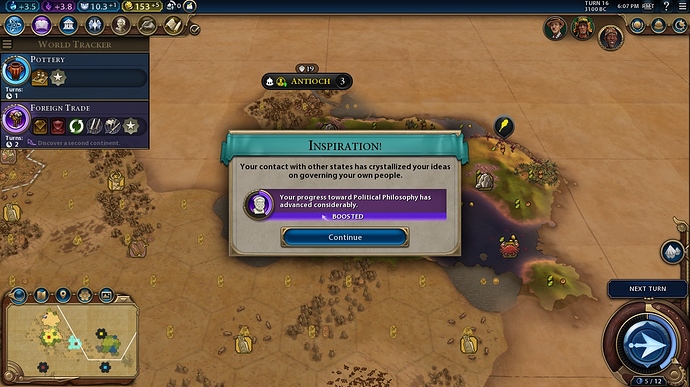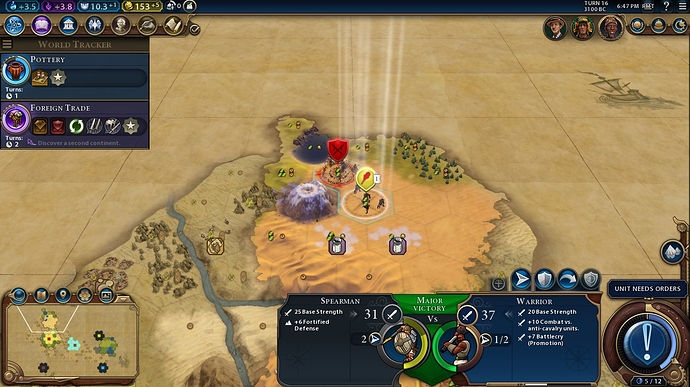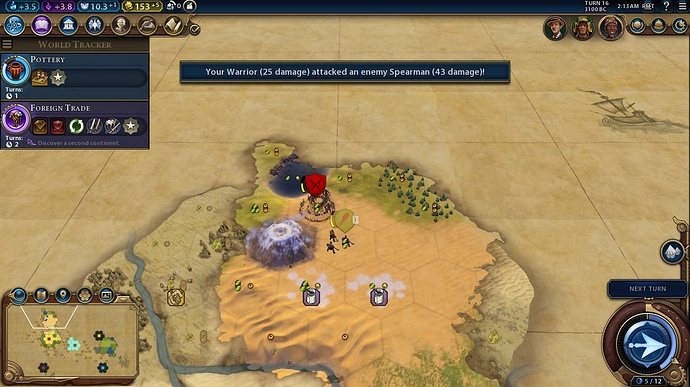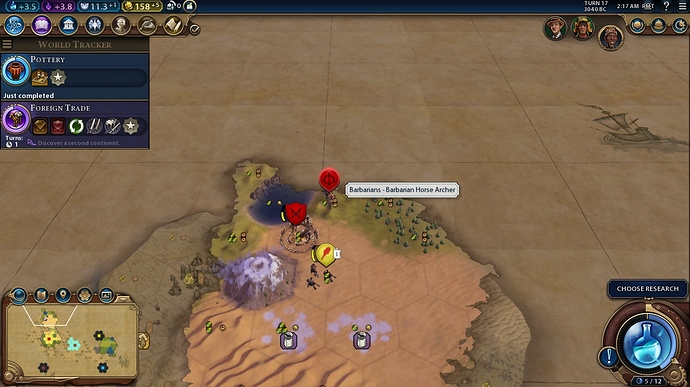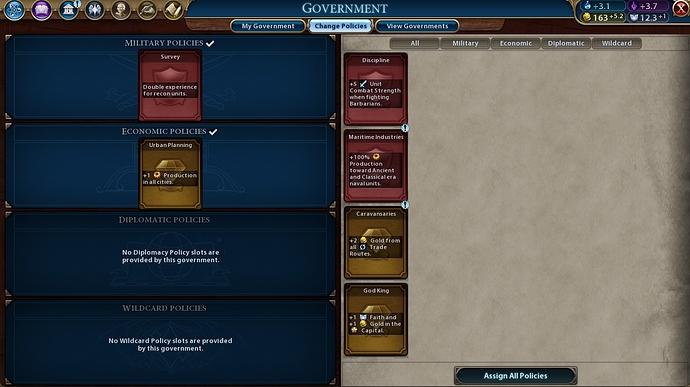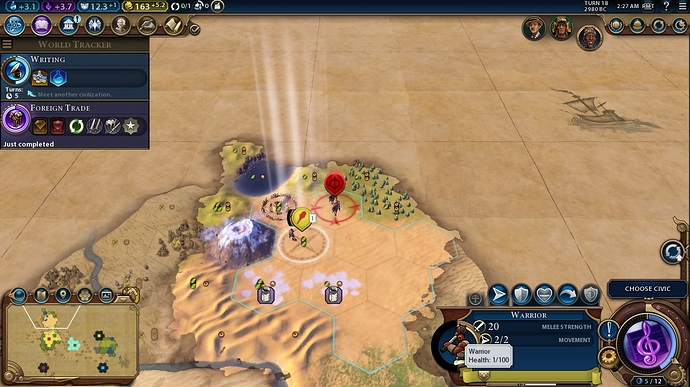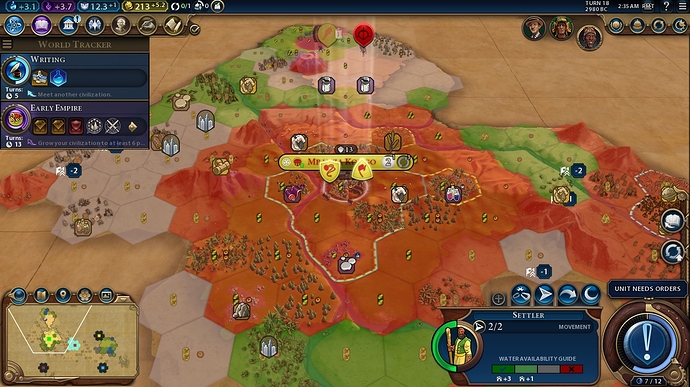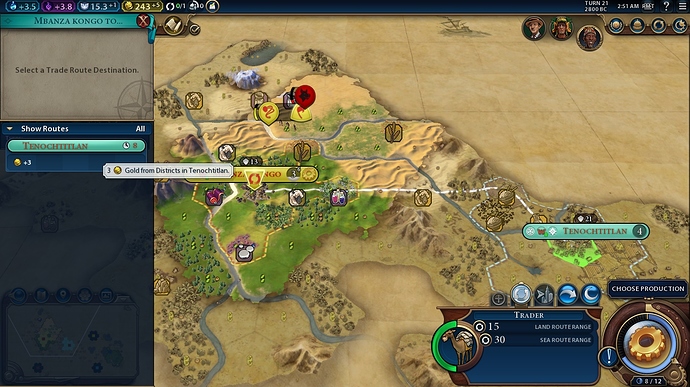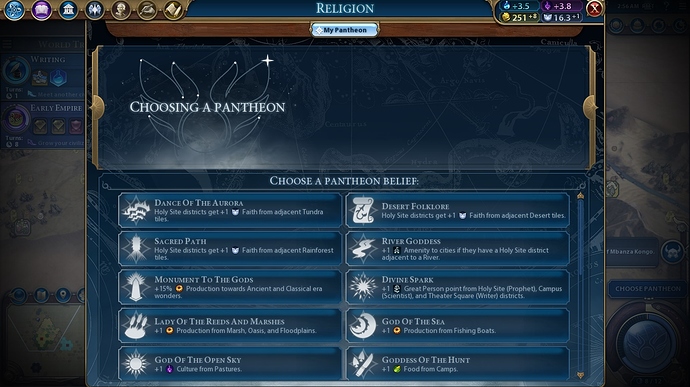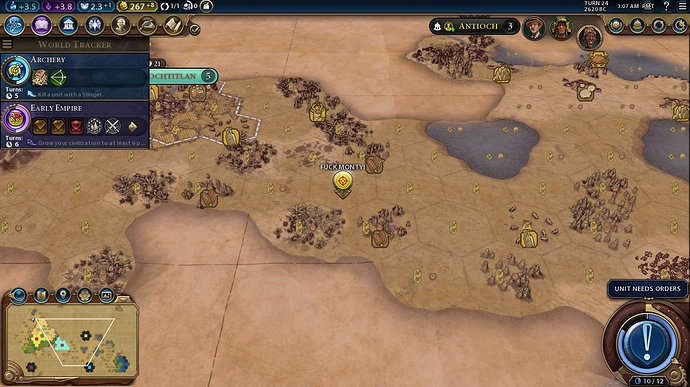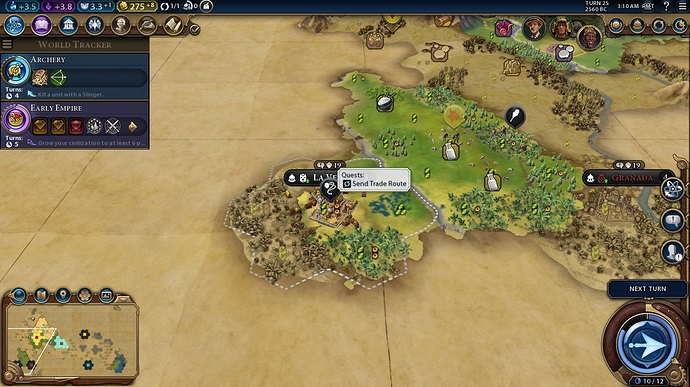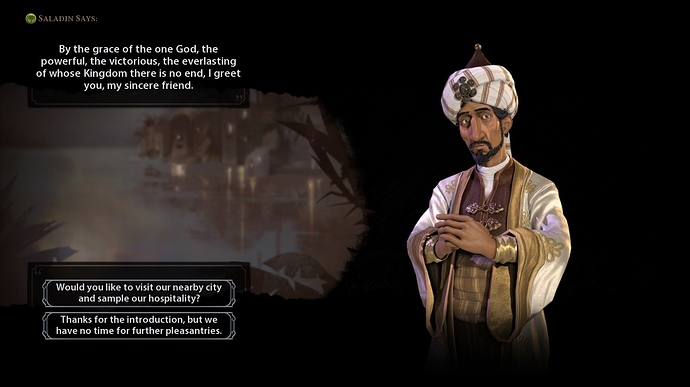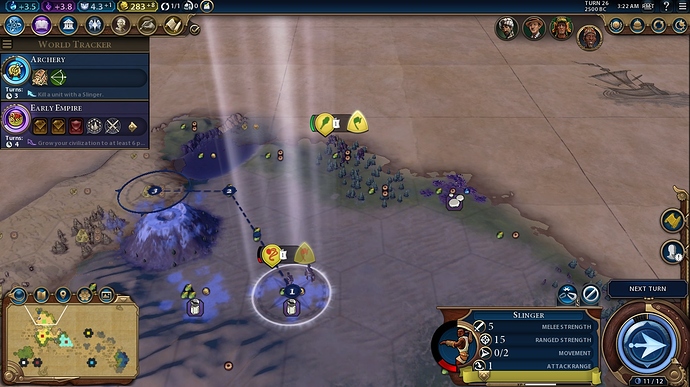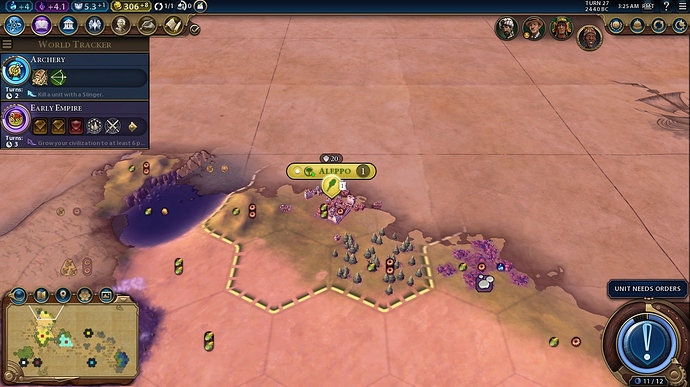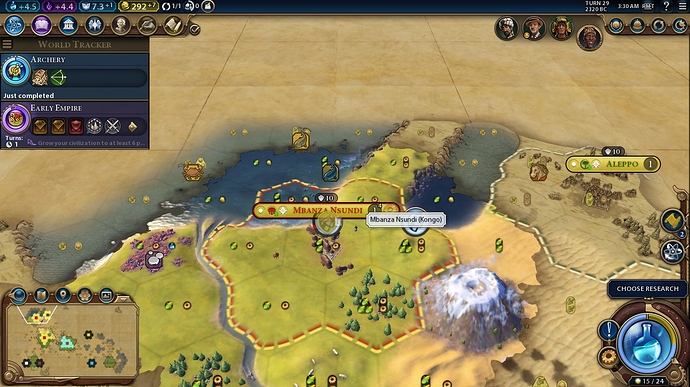Good morning, afternoon or night (depending where you are right now) everyone and welcome to BigScreens’ Noob Plays: Sid Meier’s Civilization VI.
Ah, Civilization. The acclaimed, old as shit 4x - eXplore, eXpand, eXploit, eXterminate - game where you take control of a historic personality in charge of a Country/Territory/Empire/whatever-statelike-organization-has-existed. Then, you have to, in Sid Meier’s own words: “stand the test of time”, which reads: crush your enemies under your army’s feet, build a rocket and leave to Mars, force them to buy your stupid jeans and listen to your catchy pop music or straight the planet on the ways of your god.
Civ VI has been out for a couple of years now, with one expansion, Rise and Fall, and a second one called Gathering Storm on its way, arriving on Feb. 14. The expansion will bring new features like climate change and a bunch of new civs like the Inca, Maori and Canada. To stave off the hype, I decided to do this Let’s Play, since I’ve been toying with the idea of trying the underrated art of screenshot LPs.
At first I’ll try to explain the game for those who aren’t familiar with the series. Then, I’ll just play and show you what’s happening. Just keep in mind that I’m kind of a noob, so I have no idea if I’ll be able to properly explain every game mechanic (hence the thread’s title).
The main objective of these series is to win at least one game by each victory condition (except score cause score is dumb), in no particular order. I’ll begin on Prince difficulty, bumping it up by one level for each win (I’ll probably put a limit to how many tries I’ll do before tuning it down again. Remember: noob).
I’ll be using some mods. Nothing that changes too much of the game, just add some QoL improvements.
Ok, so without further ado, the disclaimers:
- Sid Meier’s Civilization VI is property of Firaxis/2K. Every single image from now on will be taken direct from the game and doesn’t have any monetary intent.
- The mandatory “sorry for my english”.
And here we go:
Once you launch the game, you’ll be treated to the usual main menu screen, which is pretty self-explanatory. Single/Multiplayer, Scenarios, Quick Play etc. Also, you DEFINITELY should stop for a second and hear the music. Christopher Tin won a grammy for Baba Yetu, the Civ IV song, and he nailed it once again in Sogno di Volare.
Anyway, I’ll choose ‘Create Game’ and these settings for our first playthrough:
I’ll also go to advanced setup and disable turn limit and score victory because, again, these are dumb. I like to play until someone wins.
After pressing start, our leader/civ is revealed to us:
My resolution seems wrong due to Loading Screen Mod’s changes. The original interface is just “an unique unit/building/district
Mvemba a Nzinga from Kongo! Mr. Nzinga, also known as King Afonso I, was the second Christian king (or Manikongo) from Kongo. After his father converted to Catholicism, he was also baptized and became a zealot Catholic, with his entire reign being marked by it. He made an effort to syncretize Kongo’s original faith with the Christian beliefs.
So, Kongo is a civilization for whom there’s one victory type less: the Religious one. They can’t build holy sites, gain Great Prophets nor found religions by themselves. Instead, they use the beliefs from the religion established in the majority of their cities. Neat. The tradeoff is that they’re geared for culture, and religious relics are even better for them in this sense thanks to their Unique Ability: Nkisi. It gives them more food, more gold and more production for each Relic, Artifact and Sculpture in their museums. It’s also easier for them to generate Great People.
Both their Unique Unit, Ngao Mbeba, and their Unique Infrastructure, the Mbanza district, are meant to take advantage from the terrain. The Mbeba are faster in woods and rainforest, and the Mbanza can only be built in it. The district gives good housing, along with food and gold.
Didn’t understand a thing? No problem. It will all become clear in time (or so I hope).
Here we are. The game in all its cartoonish glory. There are a bunch of things we can see right away. Let’s start from the start: The buttons on the upper left are, respectively, how much we earn of science, culture, faith, gold and envoys, with the report button being the last one. Science allows us to evolve technologically, culture makes our state/society as a whole more complex, faith is necessary to found a religion and everything related to it. As Kongo, our faith points will be expended in other things. Gold is, obviously, our currency. An empire in debt is highly inefficient, and we can even rush-buy some things if we have enough moneys. Envoys are sort of diplomats that we send to city-states to be their suzerain and earn unique bonuses.
On the top right, we have the turn, the year, the local time, RMT is the radial measuring tool, a mod which allows you to see until where your proximity bonus bonuses apply, the Civilopedia and the options. Also, there’s a small portrait of Mvemba a Nzinga, a world ranking button where you can see how you currently stand in all victory types and an Era button, which we’ll delve deeper later.
Looking left, we have the tech tree, where we can choose what to research, see further techs and their requirements. The civics tree is the tech tree for culture, and, as we can see in the pic, we’re already researching Code of Laws. It’s the mandatory first civic. Right next to it, we have the Great People and Governors buttons. More on those later. The last one is the history timeline, a Rise and Fall feature where you can see the proudest moments from your civilization. These points translate into Era Score (you can see it on the lower right, the 0/12 next to the small moon symbol). The game’s timeline is split in eras: Ancient, Classical, Medieval, Renaissance, Industrial, Modern, Atomic and Information.
Down left, we have map options and the minimap itself. The first button, the lens, changes the interface to whatever you choose. Continents, Loyalty, etc. The second one is the map options, and I highly recommend to tick the “show yields” box, as it’ll be a lot easier to know what each tile generates. Map Pins are little markers that you can put on the world. The strategic view is usually the last button, that last one is just screenshot mode (it hides the interface so you can take nice pics) and comes with the UI mod. Strategic View is great.
It allows you to clearly see the rivers, hills, mountains etc that sometimes can be kinda hard to spot, mainly when your land is full of buildings.
On the bottom right, we have the aforementioned Era Score, our selected unit, Settler, stats and a huge AN UNIT NEEDS ORDERS BUTTON, which is the “Next Turn” button when you finished all the mandatory tasks for a turn.
The Settler has 2/2 movement, but we’ll just settle on his spawning spot (if your starting hex isn’t good enough, you can always shuffle your settler a bit before founding your capital). Clicking on the “Found City” button above his stats does this:
Right, now that we just built Mbanza Kongo overnight and from nothing but dust, we can talk a bit about the game proper. We have a bunch of resources near our capital and I’ll explain what they are, but first things first. You may notice that by settling a city we can see that our empire is now producing a bit of science, culture etc. That’s because of the main Civilization mechanic: citizens.
Clicking our Capital’s banner opens up a window with some details about it. Those buttons are: toggle city details, which gives you a nice report on what your city builds, generates, lacks etc. Purchase tile with gold, buying things with gold or faith and changing production are pretty much self-explanatory. The middle button, highlighted in the screenshot, changes the interface to show which tiles your citizens are currently working. Yes, that’s right, you can’t reap in your tiles’ precious outputs if there’s no one working on them.
That’s what the huge 1 right next to our capital’s name means: it’s the city’s population. Currently, we have just one citizen, but our city will have enough food for the population to grow by one in just 5 turns. Those small buttons below the city details/purchase tile/citizen management/etc are your city’s focus. If you click on any of them, the AI will automatically shuffle your citizens to produce whatever you’re focusing on. Really useful if you want to specialize your city to generate science, culture or build a world wonder.
So we go back to the default screen. That small club next to our capital is our Warrior, the earliest military melee unit. You start with one of them every game, and they’re useful to scout your surroundings and providing some defense against barbarians. Barbarians are mob-ish camps which, like city-states, can’t win the game. However, they’re always hostile and can wreak havoc in your civilization if not properly dealt with.
Our territory is limited by the dotted line (it’s dotted now because we aren’t a proper empire yet, which means our frontiers aren’t established and anyone can go through our lands at will). It will grow as we earn more culture, one tile at a time. On our lands we have Sheep, a bonus resource, and Silk, a Luxury Resource.
Bonus resources just give bonus yields to the tile where they are located and can’t be traded. Luxury gives you Amenities, and those are vital to your empire’s growth. For those who played Civ V, Amenities work like Happiness, but now it’s per city and not empire-wide. For those who aren’t familiar, Amenities are the “circus” part of your panis et circenses. They make your citizens happy. Happy citizens work with a smile on their faces and don’t have any penalties to their production.
Each unique luxury resource gives you +4 Amenity, one per city which needs it the most. If you have more than one of a resource type, you can trade it to other civilizations and, thus, earning more amenities. Luxury resources don’t need to be worked by citizens to give Amenities, you only need to improve their tile.
Also, there are Strategic Resources. These aren’t initially revealed on the map (I think horses are the exception) and are usually required to build stronger military units. They start to appear as soon as you research their requisite tech.
I know this seems like a lot of information, but I swear it’s way easier when you’re just playing. And the civilopedia is a great tool. Don’t neglect it.
Onwards, we click the Choose Research Button, which gives us this screen:
These are the available techs, and we can see the tech tree if we click the button. Those small symbols beneath each tech’s name show what we can build when our civilization discovers the tech. The small arrows under Astrology and Sailing are Eureka Moments. If you do what’s written, you earn a nice boost to that tech’s research (something like 40%, but I’m not completely sure). The civics tree has its own Eureka mechanic, it’s called Inspiration and works the same way.
We’ll go with Animal Husbandry first to take advantage of both those sheeps near our capital. I know one of them isn’t on our land, but it’ll be soon enough. We’ll also want to explore our surroundings with the warrior, so we’ll send him one hex south.
Now, we just need to choose our city’s production before we can (FUCKING FINALLY, I know) go to the next turn:
We can build a Monument, the first building of the game, which gives us +1 culture per turn. We can also build some units: Settlers, as we already saw, allows us to found a new city, but we need at least 2 population in a city to build one. Builders gonna build. Every tile improvement is done by them: farms, mines, plantations, pastures… They have limited charges, so prepare yourself to make A LOT of builders throughout the game. Scout is the first recon unit, a person and a dog with more movement points than normal military units who earn experience by discovering new land. Warriors we already met before and Slingers are the first ranged unit, just a bunch of people slinging rocks.
We’ll go with a scout first. Exploring is a huge part of Civ (it’s one of the 4Xs after all), as you can earn bonuses if you find Small Villages (treasure-huts like, scattered across the map) and city-states before anyone else. It’s also good to find barbarian camps and good resources for future settling. Settling new cities is a huge part of any Civ game, but in Civ VI it’s even bigger because the game is made for playing wide (for the agony of those, like me, who love playing tall). As I selected Standard map size, we’ll have 7 civs along with us, so our map is kinda big and can be kinda crowded later. Scouting helps you stay ahead.
Now we FINALLY click the next turn button, and here’s where I’ll stop this first update. Sorry if things aren’t much clear and sorry for the size, but I didn’t want to split this first impression into two posts. Anyway, I promise it’ll get easier in time. The forthcoming updates will also be pretty much about information, but after everything (or almost) is properly explained, we’ll just play the game and whatever. Thank you for the attention, hope I manage to do a good job in this thread. Stay safe. See y’all next time.


